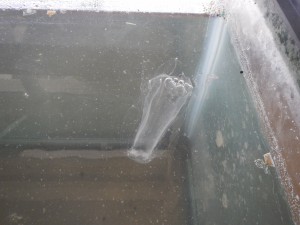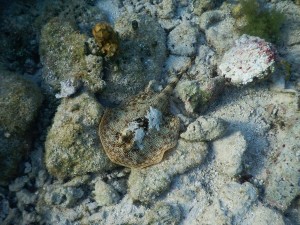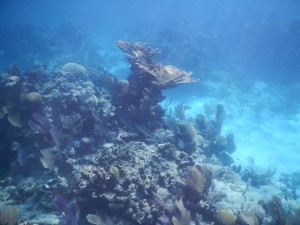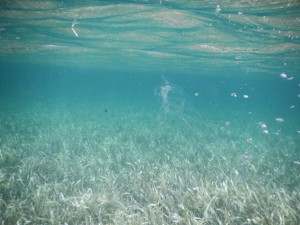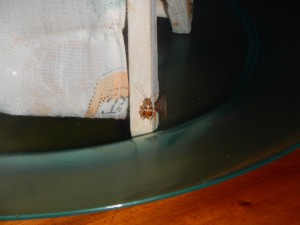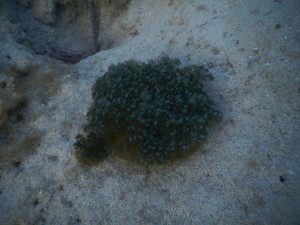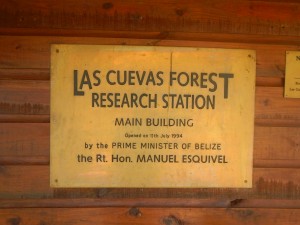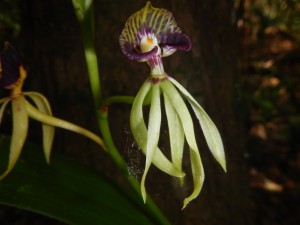I’m home. It’s strange to think that the two-week journey of tropical field biology has already ended. I feel that being in the Chiquibul forest and Glover’s reef has not only informed me knowledge wise about these two diverse ecosystems, but it has also changed me spiritually.
One thing I can’t help but see is how similar the Chiquibul and Glover’s are. Don’t get me wrong, they harbor completely different life forms and habitats, but both have incredible species specialization. Each organism on both places occupies a unique niche where they thrive in the competition for resources and reproduction. Just as some species are suited for the deeper reefs, other terrestrial creatures live their lives high in the forest canopy. The many possible ways life forms can occupy an available niche gives the opportunity for speciation, and with time and enough resources, a divers array of species can emerge.
Species diversity also depends on the amount of free resources in a given area. Surprisingly, both the reefs and the forests in Belize are low in nutrients, yet both areas have developed adaptations to ensure high efficiency of nutrient cycling. Organic matter in both places is quickly recycled into nutrients that sustain the reef and forest food chains. To me, the stars of the nutrient recycling goes to the detritivores of both the forest and the sea that turn dead material into accessible nutrients for primary producers like plants and algae.
Symbiosis is a common theme between forests and reefs. For example, corals depend on symbiotic algae that photosynthesize nutrients to the coral polyps, which provide housing and protection to the algae. In forests, acacia trees and ants share a symbiosis where the ants live within the tree and feed on protein buds provided by the leaves while tree gains protection from herbivores with its ant army.
One critical difference I’ve observed is how people talk about recovery and resilience for forests versus recovery for coral reefs. Even though both ecosystems are sensitive to changes, reefs can completely die out with only 2 degrees Celsius of change, something that affect the forests as much. The prospect of rising sea levels, temperatures, and human development seems to put more pressure on the reefs than on the forests. I often find the tone of forest conservation in the Chiquibul to be more optimistic than similar conversations in Glovers.
This course is nothing like I expected it to be. I never imagined being so excited to hear someone yelling ROACH from their restroom. My favorite parts of the course were the night walks and diversity dives which allowed for me to search for my taxa and learn about them and their ecology. I also enjoyed the guest lectures as they were very informative on either conservation efforts at belize, or simply giving a profound look into the tropical field biologist life. The least enjoyable part of the course was the crummy transportation organization, but I guess accidents happen! Other than that, I think it’d be a better idea to give lectures earlier on in the day than late at night, when it becomes difficult to stay awake. Plus giving taxon briefings earlier on would give each of us an idea of what to look for.
While I learned a lot of interesting nature facts, conservation efforts, and natural history of belize, I think the biggest growth I had here in Belize was spiritually. When I heard Lauren’s talk about the difficulties of managing camera traps in the Chiquibul and all the things that went wrong in her studies, I was amazed to see her bright personality still shine through. Her words “Don’t take life too seriously” made me reevaluate my priorities. To move on easily in life in the midst of failure and not freak out is a skill not many have and to see it manifest in a field biologist really left its mark. It’s definitely a new mantra I need in my life!
As the roach expert, I think the course has changed how I see cockroaches in my life. By forcing me to read on a “despicable” creature, I was given an opportunity to get out of my comfort zone and learn the true diversity of these creatures outside of stereotypical portrayals. I learned that cockroaches are a super diverse family of insects that come in all sorts of shapes, colors, and sizes, each adapted to a particular niche of its environment. I think it’s been particularly exciting to study a family that not many people are willing to look at. Each day, I learned about and saw new species with unique patterns and behaviors.
A final impactful point that has changed me is the beach cleanup project and marine debris lecture. I never expected such a pristine location to feel the effects of marine trash. The more I cleaned, the more sever I felt the problem become. I couldn’t help but feel convicted with guilt as I saw all the brittle plastics being sorted out of the island. It really made me see the urgency of action in a very relevant setting. The experience was nothing short of eye opening. I hope it’s something I can continue on my own and hopefully get more people involved.

From canopy to understory
From shallows to depths
From surf to turf, from leaf to reef
Rise from Belize
New TFBs

